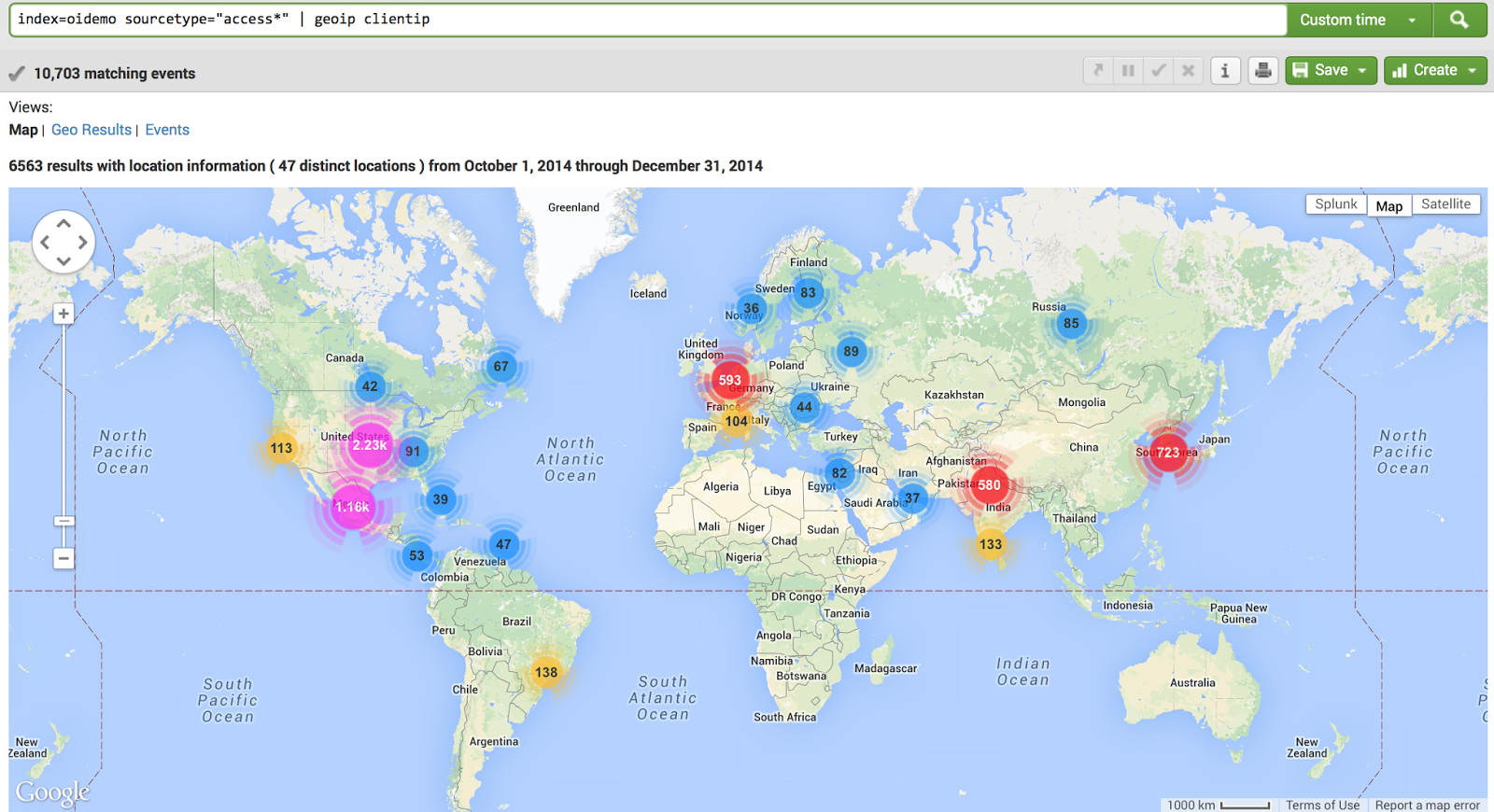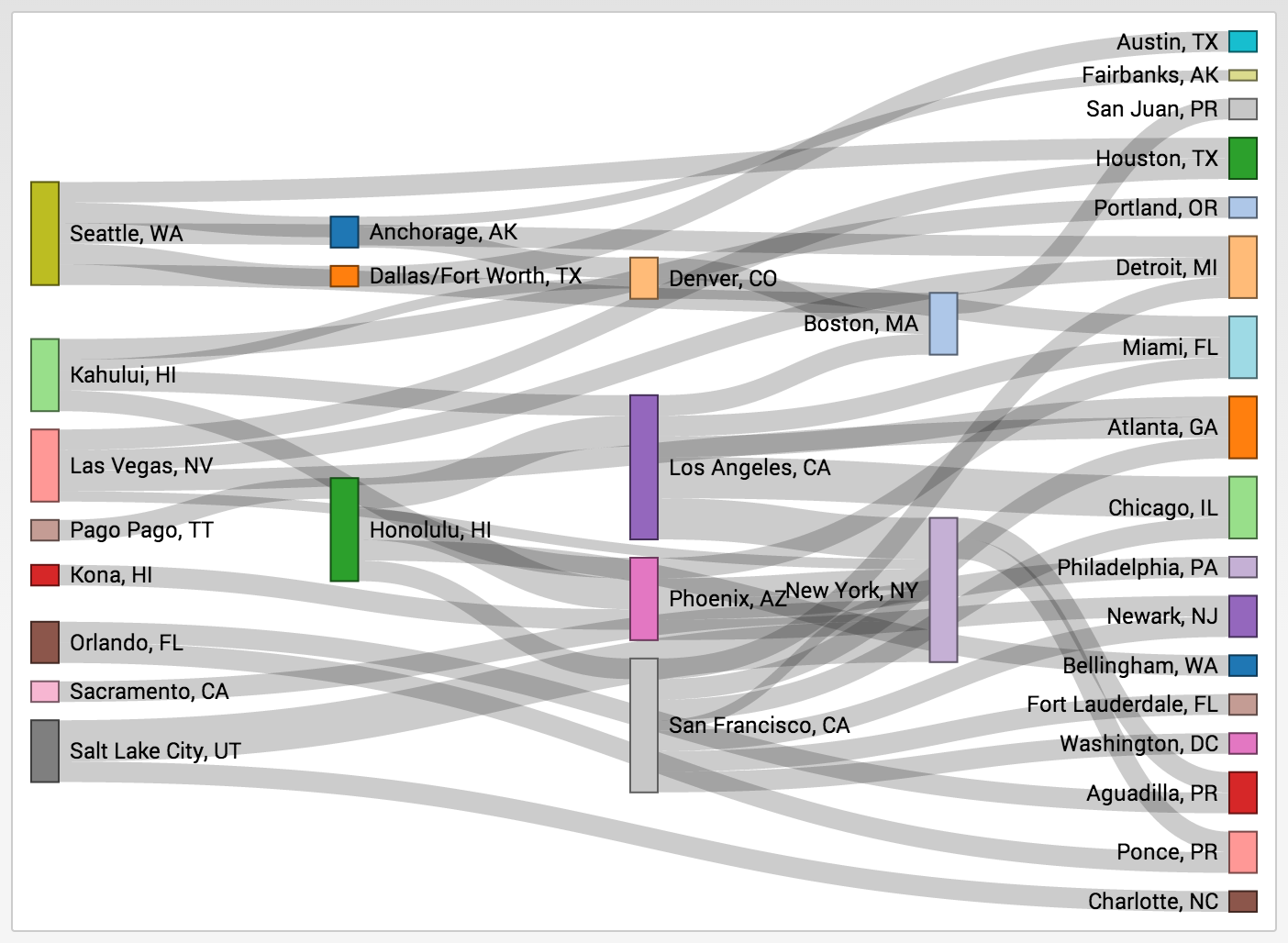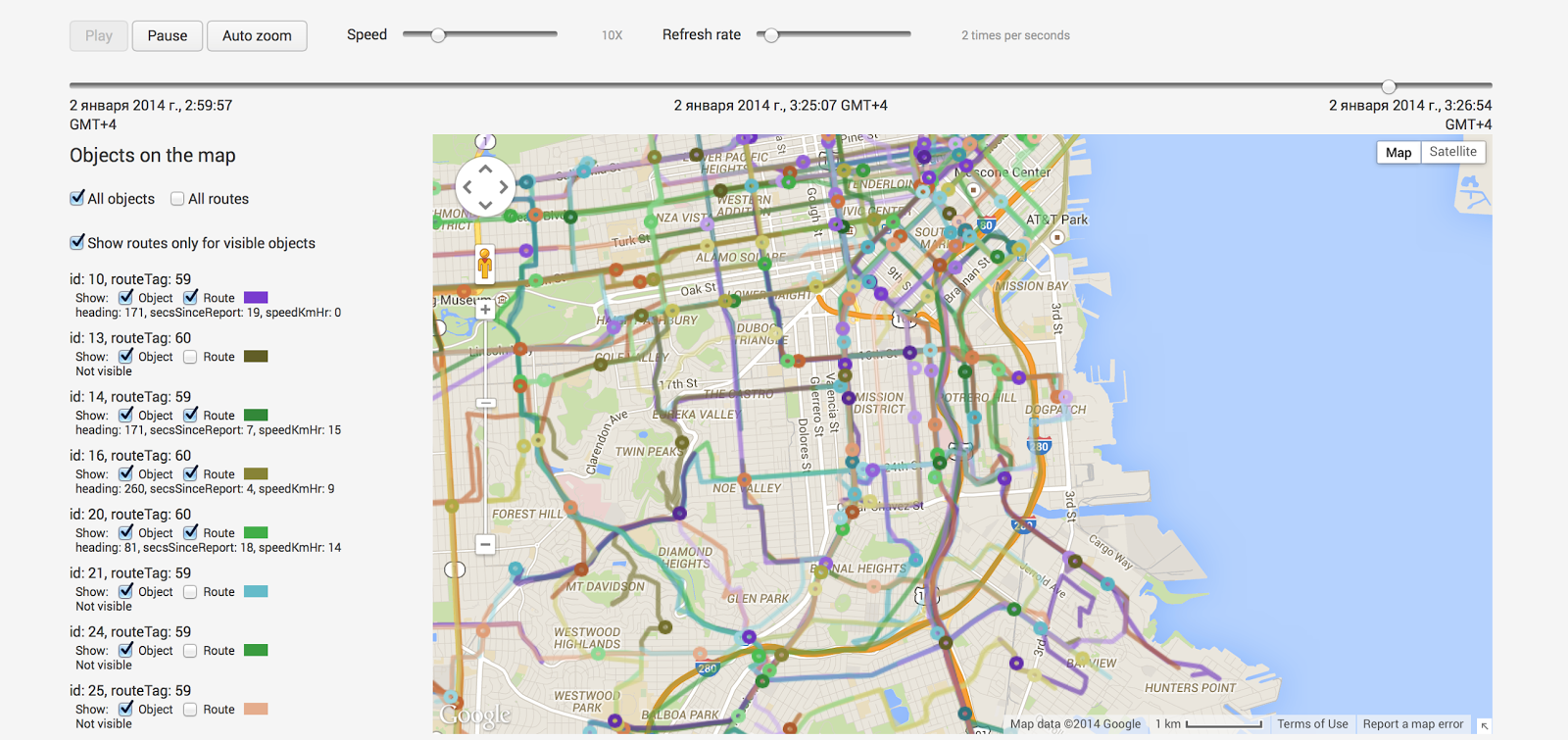According to Forrester research:
Analysis of web data can be bucketed into 3 broader categories:
 Organizations in the early stages tend to focus on user acquisition and measuring performance on marketing channels. Organizations extend the analysis efforts from effectiveness of marketing channels to overall impact of business through business performance analytics. As the organization matures, optimization of user experience on the site becomes embedded within the measurement initiatives. Web analytics tools and analysts are primarily focused on marketing analytics and business performance. Product/Site/Customer Analytics is the least served Analytics. Today’s product management teams need better access to data and insights to drive the best user experience on the site. Providing a good site experience is not only helpful in helping the visitors meet the visit goal, but also helps reduce cost as frequency of visit increases. Retained users are known to spend more on the site. User engagement and ultimately higher site conversion helps improve the search Quality Score for the site. Better search Quality Score helps boost SEO rankings and reduced spend for SEM. Google’s search algorithm has Quality Score as a key factor for calculating rankings.
Organizations in the early stages tend to focus on user acquisition and measuring performance on marketing channels. Organizations extend the analysis efforts from effectiveness of marketing channels to overall impact of business through business performance analytics. As the organization matures, optimization of user experience on the site becomes embedded within the measurement initiatives. Web analytics tools and analysts are primarily focused on marketing analytics and business performance. Product/Site/Customer Analytics is the least served Analytics. Today’s product management teams need better access to data and insights to drive the best user experience on the site. Providing a good site experience is not only helpful in helping the visitors meet the visit goal, but also helps reduce cost as frequency of visit increases. Retained users are known to spend more on the site. User engagement and ultimately higher site conversion helps improve the search Quality Score for the site. Better search Quality Score helps boost SEO rankings and reduced spend for SEM. Google’s search algorithm has Quality Score as a key factor for calculating rankings.
 According to amazing book Web Analytics 2.0 of Avinash Kaushik, Web Analytics tools are very good at answering the “What” question. Product/Site/Customer optimization requires answering the “Why” question. Answering the “Why” question needs access to granular data and deep understanding of user behavior at a session level. This data is high in volume and cardinality. The problem is often referred to as “big data” problem. Additionally, with the changing landscape
According to amazing book Web Analytics 2.0 of Avinash Kaushik, Web Analytics tools are very good at answering the “What” question. Product/Site/Customer optimization requires answering the “Why” question. Answering the “Why” question needs access to granular data and deep understanding of user behavior at a session level. This data is high in volume and cardinality. The problem is often referred to as “big data” problem. Additionally, with the changing landscape
for mediums that users interact with the site, the importance to have access to granular data in real-time is becoming a requirement.
Some analysis questions are:
Optimizing the experience in real-time and targeting customers with the right content will help with user experience and improve revenue. Additionally, site uptime is important for revenue and brand protection. Driving Digital Intelligence (DI) for the website is getting ingrained within IT organizations. DI provides all aspects to manage operations for your site. With build in dashboards and reports, all operational elements (page errors, stats by hosts, bot visits etc.) are available in real-time.

Customers are interacting through multiple channels (web, mobile, social, offline, in-store etc.). Multichannel analysis requires stitching data from multiple data sources. The data is a mix of structured, semi-structured and unstructured formats. Stitching this vast variety of data is not only expensive but also resource intensive. Organizations run multiple month data warehousing projects to stitch the data with limited to no success. Additionally, organizations have to spend enormous amount of resources to maintain these processes. Getting integrated views, with real-time data, are distant realities for the efforts. DI can take and stitch data from multiple formats and create integrated views without the overhead of resource/maintenance cost.
 Finally, there is growing buzz about the term “Data Scientist”. Hillary Mason – Chief Scientist at bit.ly defines data scientist as “a data scientist is someone who can obtain, scrub, explore, model and interpret data, blending hacking, statistics and machine learning.“ In speaking to number of industry leaders, it is clear that data scientist spend an inordinate amount of time and effort obtaining, cleaning, transforming the data and preparing the data for analysis. Part of the problem is the variation in the data (unstructured, semi structured etc.) and part of it is volume. Using data that was gathering from DI sources can be used effectively to help the data scientist shift the focus on creating awesome analysis and searching business insights.
Finally, there is growing buzz about the term “Data Scientist”. Hillary Mason – Chief Scientist at bit.ly defines data scientist as “a data scientist is someone who can obtain, scrub, explore, model and interpret data, blending hacking, statistics and machine learning.“ In speaking to number of industry leaders, it is clear that data scientist spend an inordinate amount of time and effort obtaining, cleaning, transforming the data and preparing the data for analysis. Part of the problem is the variation in the data (unstructured, semi structured etc.) and part of it is volume. Using data that was gathering from DI sources can be used effectively to help the data scientist shift the focus on creating awesome analysis and searching business insights.
Examples of some questions the DI can answer:
3. Can I get real time visibility into pages or properties within the site that are being used for converted users? Can I get the same for non-converting users?
4. Are there specific sites trying to scrape content or offers from your site?
5. Does showing the actual offer change the open rate for email and ultimately the conversion rate?
6. Can we build out a "what if" analysis for marketing or user attribution for web / telecom / social / mobile?
Traditional web analytics techniques were not designed for the breadth of channels, devices, and speed that fuels today's digital interactions. It is fundamentally inadequate to accommodate emerging channels, sophisticated consumers, technical challenges, and the democratization of analytics within data-driven enterprises. Because subpar analytics puts customer relationships at risk, Forrester has redefined the modern practice of web analytics as "digital intelligence."Welcome to the new world, world of Digital Intelligence or Digital Marketing Analytics.
Analysis of web data can be bucketed into 3 broader categories:
- Business Performance Analytics (revenue, margin, biz performance against goals)
- Marketing Analytics (user acquisition through SEO/SEM etc.)
- Product/Site/Customer Analytics (User behavior Analytics when the user is on the site)
If we are going to compare traditional Web Analytics and Digital Intelligence, we can get this list:
Analytics
Types
|
Web Intelligence | Digital Intelligence |
| Customer/Product Analytics | ✔ | ✔ |
| Mobile App Analytics | ✔ | |
| Social Media Analytics | ✔ | |
| Multi-Channel Analytics | ✔ | |
| Big Data - Hadoop | ✔ | ✔ |
 Organizations in the early stages tend to focus on user acquisition and measuring performance on marketing channels. Organizations extend the analysis efforts from effectiveness of marketing channels to overall impact of business through business performance analytics. As the organization matures, optimization of user experience on the site becomes embedded within the measurement initiatives. Web analytics tools and analysts are primarily focused on marketing analytics and business performance. Product/Site/Customer Analytics is the least served Analytics. Today’s product management teams need better access to data and insights to drive the best user experience on the site. Providing a good site experience is not only helpful in helping the visitors meet the visit goal, but also helps reduce cost as frequency of visit increases. Retained users are known to spend more on the site. User engagement and ultimately higher site conversion helps improve the search Quality Score for the site. Better search Quality Score helps boost SEO rankings and reduced spend for SEM. Google’s search algorithm has Quality Score as a key factor for calculating rankings.
Organizations in the early stages tend to focus on user acquisition and measuring performance on marketing channels. Organizations extend the analysis efforts from effectiveness of marketing channels to overall impact of business through business performance analytics. As the organization matures, optimization of user experience on the site becomes embedded within the measurement initiatives. Web analytics tools and analysts are primarily focused on marketing analytics and business performance. Product/Site/Customer Analytics is the least served Analytics. Today’s product management teams need better access to data and insights to drive the best user experience on the site. Providing a good site experience is not only helpful in helping the visitors meet the visit goal, but also helps reduce cost as frequency of visit increases. Retained users are known to spend more on the site. User engagement and ultimately higher site conversion helps improve the search Quality Score for the site. Better search Quality Score helps boost SEO rankings and reduced spend for SEM. Google’s search algorithm has Quality Score as a key factor for calculating rankings. According to amazing book Web Analytics 2.0 of Avinash Kaushik, Web Analytics tools are very good at answering the “What” question. Product/Site/Customer optimization requires answering the “Why” question. Answering the “Why” question needs access to granular data and deep understanding of user behavior at a session level. This data is high in volume and cardinality. The problem is often referred to as “big data” problem. Additionally, with the changing landscape
According to amazing book Web Analytics 2.0 of Avinash Kaushik, Web Analytics tools are very good at answering the “What” question. Product/Site/Customer optimization requires answering the “Why” question. Answering the “Why” question needs access to granular data and deep understanding of user behavior at a session level. This data is high in volume and cardinality. The problem is often referred to as “big data” problem. Additionally, with the changing landscapefor mediums that users interact with the site, the importance to have access to granular data in real-time is becoming a requirement.
Some analysis questions are:
- Content or article going viral: Organization will strive to have insights into user interaction with the goal to increase visitor stickiness or visit depth.
- Understanding marketing campaign effectiveness.
- Mobile, social interactions to various content within the online ecosystem.
- Optimizing for inventory (physical or virtual) needs access to detail level data in real-time for understanding opportunities to improve the supply chain.
Optimizing the experience in real-time and targeting customers with the right content will help with user experience and improve revenue. Additionally, site uptime is important for revenue and brand protection. Driving Digital Intelligence (DI) for the website is getting ingrained within IT organizations. DI provides all aspects to manage operations for your site. With build in dashboards and reports, all operational elements (page errors, stats by hosts, bot visits etc.) are available in real-time.

Customers are interacting through multiple channels (web, mobile, social, offline, in-store etc.). Multichannel analysis requires stitching data from multiple data sources. The data is a mix of structured, semi-structured and unstructured formats. Stitching this vast variety of data is not only expensive but also resource intensive. Organizations run multiple month data warehousing projects to stitch the data with limited to no success. Additionally, organizations have to spend enormous amount of resources to maintain these processes. Getting integrated views, with real-time data, are distant realities for the efforts. DI can take and stitch data from multiple formats and create integrated views without the overhead of resource/maintenance cost.
Better analysis needs diving deep into the data, creating segments and doing segmentation on the fly. Traditional web analytics tools have limited segmentation capabilities and options. In most cases, analysts need to predefine segments. Data for these segments is only available after the segments are set. Historical processing of segments is not available. With DI ad-hoc analysis can be done very easily. Segmentation on the fly and ability to do n level segmentation with ability to look at how the segment performed historically is available out of the box.
 Finally, there is growing buzz about the term “Data Scientist”. Hillary Mason – Chief Scientist at bit.ly defines data scientist as “a data scientist is someone who can obtain, scrub, explore, model and interpret data, blending hacking, statistics and machine learning.“ In speaking to number of industry leaders, it is clear that data scientist spend an inordinate amount of time and effort obtaining, cleaning, transforming the data and preparing the data for analysis. Part of the problem is the variation in the data (unstructured, semi structured etc.) and part of it is volume. Using data that was gathering from DI sources can be used effectively to help the data scientist shift the focus on creating awesome analysis and searching business insights.
Finally, there is growing buzz about the term “Data Scientist”. Hillary Mason – Chief Scientist at bit.ly defines data scientist as “a data scientist is someone who can obtain, scrub, explore, model and interpret data, blending hacking, statistics and machine learning.“ In speaking to number of industry leaders, it is clear that data scientist spend an inordinate amount of time and effort obtaining, cleaning, transforming the data and preparing the data for analysis. Part of the problem is the variation in the data (unstructured, semi structured etc.) and part of it is volume. Using data that was gathering from DI sources can be used effectively to help the data scientist shift the focus on creating awesome analysis and searching business insights.Examples of some questions the DI can answer:
- In a business that can take order through site or through customer call center:
- Call volume has increased suddenly. Is it related to a campaign or is there is a sudden drop in conversion on the site that is driving a higher call volume?
- Do users calling into the call center spend more than from the site?
- For every x min reduction in hold time, what is the corresponding increase in conversion and revenue?
- Do some customers call and use the website at the same time?
- What is the impact of every dropped call on revenue?
- What is the impact of every extra 1 min hold time?
3. Can I get real time visibility into pages or properties within the site that are being used for converted users? Can I get the same for non-converting users?
4. Are there specific sites trying to scrape content or offers from your site?
5. Does showing the actual offer change the open rate for email and ultimately the conversion rate?
6. Can we build out a "what if" analysis for marketing or user attribution for web / telecom / social / mobile?
